Elkhart, Indiana-based NIBCO Inc. celebrated in style this week as esteemed guests were invited to dinner, drinks and dancing in what was a wedding reception-like ceremony that included a multi-piece band. The following day, invitees were treated the ribbon cutting of the new Rex Martin NIBCO Interactive Museum, and took the tour. The museum offers Read more
Plumbing

Elkhart, Indiana-based NIBCO Inc. celebrated in style this week as esteemed guests were invited to dinner, drinks and dancing in what was a wedding reception-like ceremony that included a multi-piece band. The following day, invitees were treated the ribbon cutting of the new Rex Martin NIBCO Interactive Museum, and took the tour.

The museum offers a unique and enriching experience from a historical perspective, interactive learning, inspiration, community impact, and career opportunities. Not just a place to learn about the past, it’s a place to get excited about the future of plumbing and the opportunities it holds.
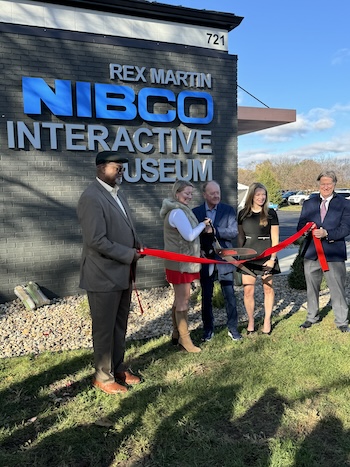 “Our decision to build the NIBCO Interactive Museum and name it after my father is a tribute to his remarkable contributions to the plumbing industry and a continuation of a legacy that began with my great-great-grandfather in 1904,” said NIBCO’s President and CEO Ashley Martin. “This ambitious project was something I wanted to complete and dedicate on NIBCO’s 120th anniversary to make it extra special. The museum is not just about preserving our history; it’s about showcasing the profound impact we’ve had on the evolution of plumbing and our philanthropic efforts within the community.”
“Our decision to build the NIBCO Interactive Museum and name it after my father is a tribute to his remarkable contributions to the plumbing industry and a continuation of a legacy that began with my great-great-grandfather in 1904,” said NIBCO’s President and CEO Ashley Martin. “This ambitious project was something I wanted to complete and dedicate on NIBCO’s 120th anniversary to make it extra special. The museum is not just about preserving our history; it’s about showcasing the profound impact we’ve had on the evolution of plumbing and our philanthropic efforts within the community.”
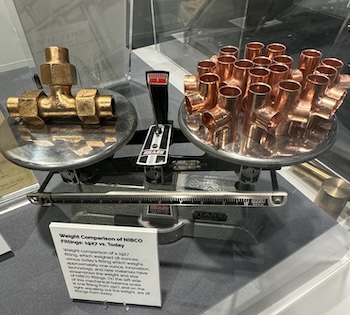 Martin continued, “I want our NIBCO associated, our customers, local school kids to be able to come here and use this so it needed to be interactive. We also highlighted plumbing: where our products go, how they bring water to you, take waste away, but it also highlights our four manufacturing processes—plastics, copper, bronze and iron.”
Martin continued, “I want our NIBCO associated, our customers, local school kids to be able to come here and use this so it needed to be interactive. We also highlighted plumbing: where our products go, how they bring water to you, take waste away, but it also highlights our four manufacturing processes—plastics, copper, bronze and iron.”
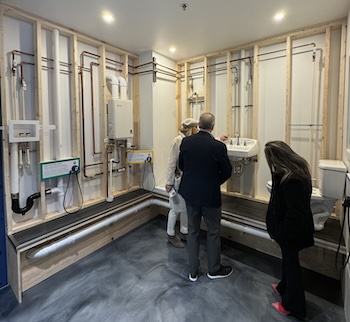
The museum offers a unique and enriching experience from a historical perspective, interactive learning, inspiration, community impact, and career opportunities. Not just a place to learn about the past, it’s a place to get excited about the future of plumbing and the opportunities it holds.
Artifacts, representing various aspects of the history of plumbing, as well as the history of NIBCO, are exhibited throughout the museum, including:
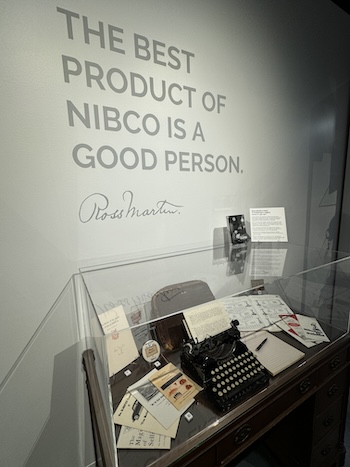
- Early foundry tools
- Original crown jewels of NIBCO
- Original early fittings including the first fitting from 1927 and early valves
- Original product blueprints from the 1930s
- Items from Lee Martin’s collection
- Original printings of Ross Martin’s collection of booklets
- Philanthropic contributions
- Collectibles and promotions
The 8,845-square-foot building was completely renovated beginning in 2023. The museum portion of the space is 3,254 square feet, and additional space in the building will be used as a training area for customers, distributors, and NIBCO associates.

Although residential construction projects often focus on major living spaces such as the kitchen, other rooms — for example, the bathroom — are growing in prominence. People want to save money on their water consumption, and they do not want the change to result in poor water pressure. Instead, they are increasingly willing to pay Read more
Although residential construction projects often focus on major living spaces such as the kitchen, other rooms — for example, the bathroom — are growing in prominence. People want to save money on their water consumption, and they do not want the change to result in poor water pressure. Instead, they are increasingly willing to pay for the technology that allows them to enjoy greater comfort while minimizing the consequences of leaks and other plumbing problems. These popular bathroom design trends reflect the effects that plumbing innovations have had in the industry.

Smart Technology
The integration of smart technology has made plumbing a great way for homeowners to improve efficiency without compromising practical use. Modern plumbing systems rely on smart systems to track water usage and use sensors to identify leaks before they cause significant water damage. Smart technology and AI can integrate into every aspect of the plumbing system, from smart watering features in the backyard to smart toilets that can be flushed using a mobile device. With this technology, plumbers gain more information about the condition and function of the plumbing system, making problems easier to find and address.
Efficient Fixtures
Water-saving fixtures have become a standard in homes, with features that homeowners have come to expect. Low-flow showerheads and toilets have been available for decades, but the function of these fixtures has dramatically improved. Modern designs use a fraction of the water of older models, but they provide similar levels of water pressure. When combined with smart technology such as sensors, residents can avoid using water when they do not need it. Tankless or heat-pump water heaters round out the package, allowing homeowners to minimize energy consumption for water heating.

Water-Saving Plumbing
The conversation about water-saving features continues, expanding into the entire plumbing system. Homeowners pay for their water consumption, when much of the water they use ends up going back to the municipal water system almost immediately. The latest systems allow homeowners to maximize their use by conserving certain types of greywater. Plumbers can install a system that cycles water from certain drains to other parts of the home, for irrigation or other uses. Property owners can see their water consumption decrease, while growing their home’s overall sustainability.
Data Analytics
People no longer have to wonder about their water consumption or the function of their plumbing systems because data can readily provide that information. Many homeowners can now spot a leak using sensors that alert them to a sudden change in water consumption. This information can save thousands of dollars in expensive repairs, while minimizing stress on the local water supply. Plumbers can use AI to find patterns based on existing data to predict the likelihood of a leak and help guide homeowners in the best time to upgrade their plumbing.
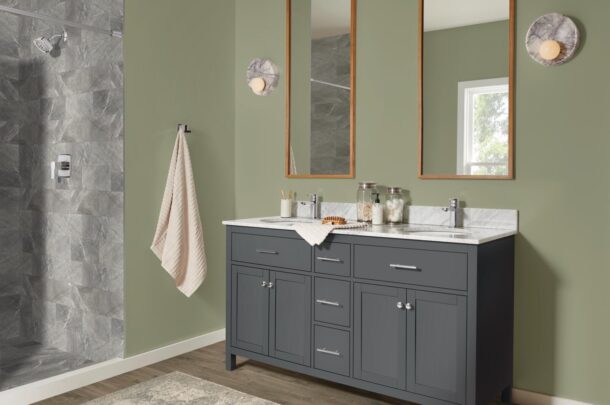
Chic Designs
Plumbing innovations are transforming the bathroom from a limited space to a true retreat. The separation of bathtub and shower has revolutionized the style and function of the bathroom. The bathtub becomes a place for rest and relaxation, featuring designs that become the statement piece of the bathroom. Without a bathtub, shower spaces can expand to meet the needs of the residents. The latest designs feature full-body showers, steam showers, soundproof ceiling installation in North Aurora, IL, and the technology homeowners need to control all of it with voice-activation or the touch of a button.
Homeowners may think more about their plumbing in recent years, which highlights the changes to the plumbing industry. Modern plumbing innovations allow homeowners to reduce their water consumption and maintain a closer watch on the condition of their plumbing. While these advances improve efficiency, they also give residents a comfortable, relaxing space while they rest from the cares of the day.
Brothers Dave and Jeff Dunaway are the Founders of Dunaway Brothers, which specializes in carpentry and decorating for commercial building projects throughout Chicagoland. Dunaway Brothers was founded in 2006 and also owns Sandwich Millworks, its residential branch, in Sugar Grove, IL. Sandwich Millworks specializes in custom millworks and is a Marvin certified window and door dealer.

https://vimeo.com/1027108697 On this update, we’ll talk PFAS, our podcasts where on the Make Trades Great Again, Eric and Andy shift from shop talk to van talk, and on the Appetite for Construction podcast, Tim and John talk with Ryan Shikhman about Trades Over College, and we update you on what’s trending on social media the Read more
On this update, we’ll talk PFAS, our podcasts where on the Make Trades Great Again, Eric and Andy shift from shop talk to van talk, and on the Appetite for Construction podcast, Tim and John talk with Ryan Shikhman about Trades Over College, and we update you on what’s trending on social media the past few weeks.

Back in May, I attended the Emerging Water Technology Symposium in Scottsdale, Ariz. Some of the brightest minds in the industry met to discuss water, water efficiency, and what new technology can be used to help conserve this precious resource. On of the many topics that stood out was conversation regarding PFAS. What the heck Read more
Back in May, I attended the Emerging Water Technology Symposium in Scottsdale, Ariz. Some of the brightest minds in the industry met to discuss water, water efficiency, and what new technology can be used to help conserve this precious resource. On of the many topics that stood out was conversation regarding PFAS. What the heck is that, you ask? Well, not necessarily new, it could be considered today’s Flint/lead in piping. I recently caught up with one of those PFAS experts, Eric Yeggy, Director of Technical Affairs, Water Quality Association, who spoke back in the desert on the subject.
MH: For those unaware, what is PFAS?
YEGGY: Per- and polyfluoroalkyl substances, or PFAS, are a group of man-made chemicals that are used in many industries. They have unique chemical properties which make them ideal for use in non-stick coatings, water-resistant fabrics, fire-fighting foams, and many other products. People often refer to PFAS as “forever chemicals” because they do not break down naturally in the environment.

There are thousands of different types of PFAS in use. Some estimate that there are as many as 15,000 different PFAS in use, many of which are considered proprietary chemicals. The exact chemical structure of these proprietary chemicals is not disclosed, which makes it very difficult to test for these chemicals. We know the most about two specific PFAS, PFOA and PFOS, which were voluntarily phased out of production in the U.S. by 2015. We know that PFOA and PFOS have found their way into our food supplies and into our drinking water, and we know that there are serious health concerns associated with these chemicals. Unfortunately, we know the least about the many other PFAS currently in use, including the next-generation PFAS chemicals that the industry switched to when they phased out PFOA and PFOS.
MH: Why is it so important for our audience to know about this?
YEGGY: Once PFAS are released into the environment, they are going to persist until we remove them. Once they reach a water source, such as a stream, lake, or underground aquifer, they can travel many miles. This persistence and mobility is why they are showing up in our food and drinking water. Studies have shown that the majority of people tested for PFAS have detectable levels in their blood.
Ingestion of PFAS through food or drinking water can lead to serious health issues including: reproductive effects such as decreased fertility; developmental effects in children such as low birth weight; behavioral changes in children; interference with hormones; interference with the body’s immune system; decreased effectiveness of vaccines; increased risk of some cancers including prostate, kidney and testicular cancers; increased cholesterol levels and obesity.
MH: How can one be exposed to PFAS, or is it all around us?
YEGGY: PFAS are all around us. We all use products on a daily basis that were made with PFAS. Beyond our food and water, common examples include cookware, carpet; upholstery, clothing, makeup, shampoo, dentil floss, paper straws, paper towels, product packaging, and even food packaging.
MH: Are children more susceptible to it?
YEGGY: It is still unknown whether children are more sensitive to all of the harmful effects of PFAS, but obviously since they are still developing, they are more susceptible to any chemical like PFAS that can cause detrimental development effects. And because of their behaviors, children might be exposed more than adults. Children play on the floor where they may be more exposed to microparticles of carpet that contain PFAS. Very young children have a habit of putting things in their mouths. Children drink more water, eat more food, and breathe more air per pound of body weight than adults do. All of these factors potentially increase the exposure risk of children.
MH: I feel like PFAS has come up lately more in conversations but I realize that it has been a problem for some time, and it has become the “new lead in drinking water crisis.” Am I oversimplifying this?
YEGGY: No, I think you are correct about that. PFAS have been a problem for many decades. The EPA’s recent actions to regulate PFAS, especially in our drinking water, have brought new media attention to an old problem that the general public wasn’t previously knowledgeable of.
MH: Is there anything that can be done to lower PFAS levels or limit it?
YEGGY: Because PFAS are so persistent in the environment, we will need to get better at preventing that from happening in the first place. Right now we are continuously recycling PFAS back into the environment (see attached graphic). Much of it passes right through wastewater treatment plants, ending up back in the surface water. Some of it is captured in the wastewater treatment sludge, which is then land-applied as fertilizer. The PFAS leaches out of the sludge and is either carried off by stormwater to a nearby stream, or percolates down through the soil into the groundwater. If PFAS-laden waste ends up in a  landfill, you will have PFAS in the landfill leachate solution that is sent to the local wastewater treatment plant, which simply starts the cycle over again. You may also end up with some landfill leachate solution containing PFAS escaping and percolating down into the groundwater. On top of all this continued recycling of PFAS back into the environment, you also have the industry constantly creating more PFAS, which eventually ends up in this cycle.
landfill, you will have PFAS in the landfill leachate solution that is sent to the local wastewater treatment plant, which simply starts the cycle over again. You may also end up with some landfill leachate solution containing PFAS escaping and percolating down into the groundwater. On top of all this continued recycling of PFAS back into the environment, you also have the industry constantly creating more PFAS, which eventually ends up in this cycle.
The good news for consumers is that companies are becoming more sensitive to these concerns and looking for alternatives to PFAS. And there are very simple over-the-counter treatment devices that consumers can use to remove PFAS from their drinking water. For the DIY consumer, there are Filters and Reverse Osmosis systems certified to remove PFAS. Look for a third-party certified seal on the product packaging that indicates the product has been certified to reduce the concentration of PFAS. The three most common third-party seals in the U.S. market are the IAPMO seal, the NSF seal and the WQA seal. I will send you a slide that shows their seals and websites.
Consumers who prefer to have a trained water treatment professional take care of this can use our website to find a qualified water treatment professional in their area who has agreed to abide by WQA’s code of ethics:
Or better yet they can use our more advanced search engine to find a Certified water treatment professional in their area, who has also agreed to abide by WQA’s code of ethics:
https://find.wqa.org/programs-services/resources/find-providers/find-certified-professionals
MH: Where can we find more information on PFAS?
YEGGY: Consumers who have questions about PFAS in drinking water can reach out to WQA (wqa@wqa.org or 630-505-0160).
WQA also has a PFAS guide for the general public:
https://wqa.org/wp-content/uploads/2024/04/PFAS-Consumer.pdf
The EPA also has a good website on PFAS which contains general information, and a link where people can submit questions to the EPA:
https://www.epa.gov/pfas/our-current-understanding-human-health-and-environmental-risks-pfas
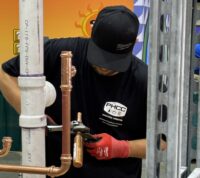
Birmingham, Ala., rolls out the crimson red carpet for Plumbing-Heating-Cooling Contractors Association (PHCC) and its attendees. “The Magic City” played host to the annual PHCC CONNECT show and the city pulled out all the stops. With mild October temperatures, it was the perfect setting to connect with fellow attendees and soak in the vibrant culture Read more
Birmingham, Ala., rolls out the crimson red carpet for Plumbing-Heating-Cooling Contractors Association (PHCC) and its attendees.
“The Magic City” played host to the annual PHCC CONNECT show and the city pulled out all the stops. With mild October temperatures, it was the perfect setting to connect with fellow attendees and soak in the vibrant culture of Birmingham.
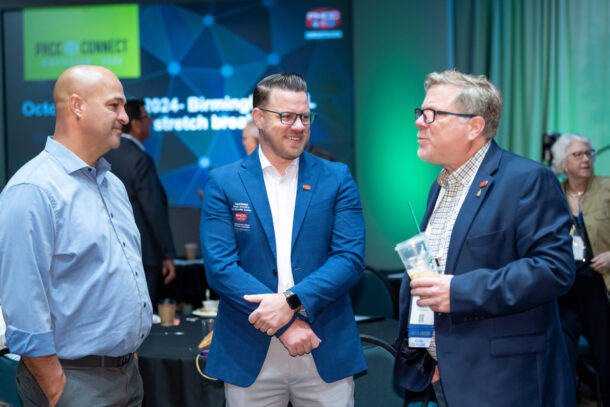
The CONNECT show began with an opening reception at the Barber Vintage Motorsports Museum—recognized by the Guinness World Records as the world’s largest motorcycle collection and home to other rare cars—and ended with an Alabama Tailgate Party at Birmingham Citywalk, where visitors could enjoy an array of food trucks serving local delicacies and engage in fun games.

The trade show floor was buzzing with latest in products and technology. New this year—although one needed to be a member to gain full access to the entire CONNECT experience—the Products & Technology Showcase floor was open free of charge to local walk-ins. This indeed brought in dozens more from the greater Birmingham area.
“This is the best place to do all of the networking,” says Erica Barnes, president, General Plumbing & Air Conditioning, Inc., Lake Worth, Fla. “I love getting new ideas form the floor and seeing what’s developing over time, such as artificial intelligence (AI) or seeing what new tools are coming out.”
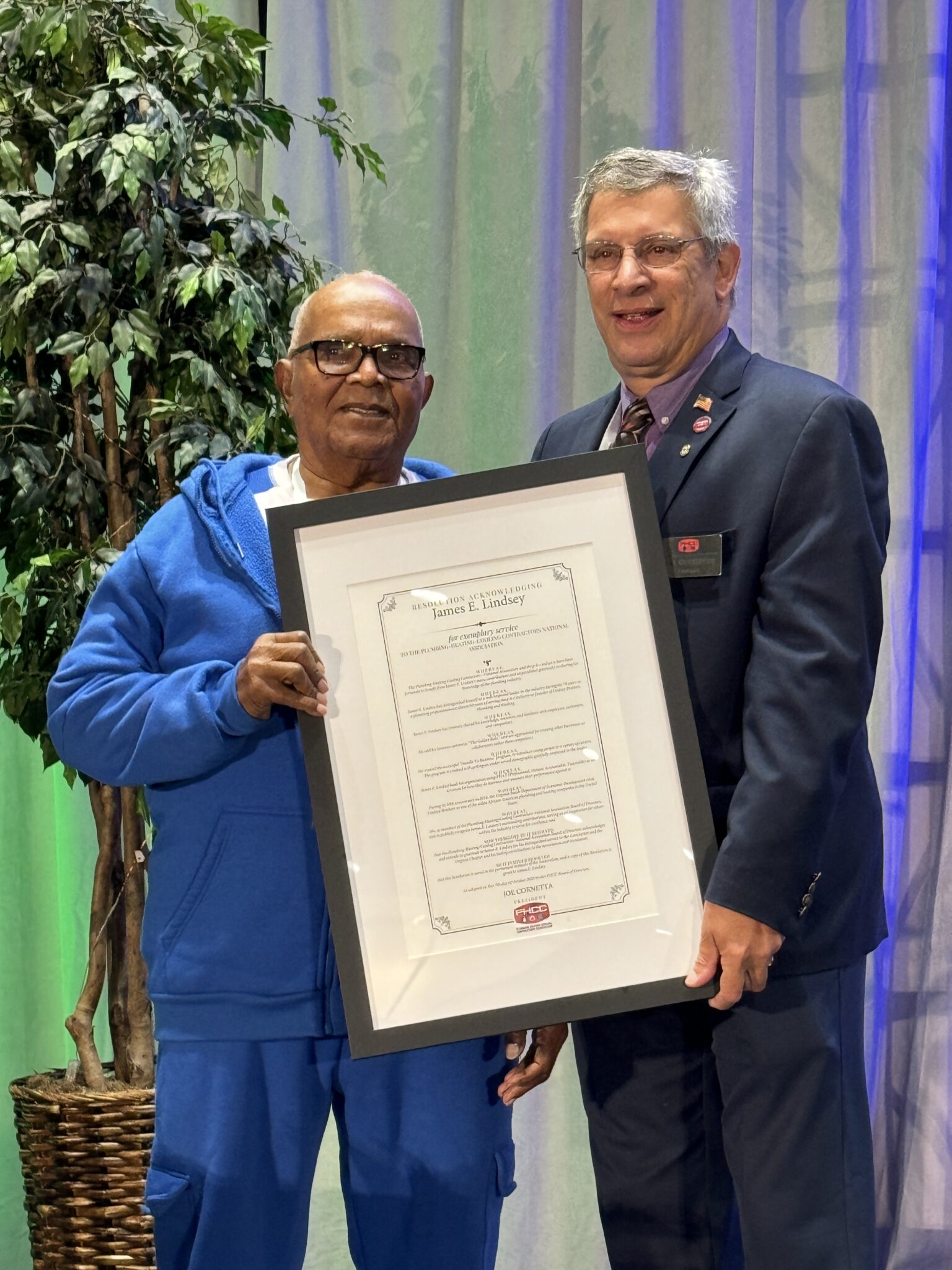 A cool moment during PHCC president Joe Cornetta’s CONNECT opener, 94-year-old James Lindsey of Lindsey Brothers Plumbing and Heating in Norfolk, Va., was recognized for his contributions to PHCC and the industry. Starting his plumbing career at 16, he founded his own business, which will celebrate its 60th anniversary in 2026.
A cool moment during PHCC president Joe Cornetta’s CONNECT opener, 94-year-old James Lindsey of Lindsey Brothers Plumbing and Heating in Norfolk, Va., was recognized for his contributions to PHCC and the industry. Starting his plumbing career at 16, he founded his own business, which will celebrate its 60th anniversary in 2026.
The annual CONNECT Show opens with an opening breakfast emceed by Bruce Carnevale, CEO, Bradford White, a staunch supporter of the association and the skilled trades. Carnevale gave an update on the company and talked about the impending NAECA 4 regulations coming down the pike in 2029, with the eventual movement away from atmospheric venting to all condensing. The Department of Energy (DOE) says the standards will require minor updates to gas-fired storage water heaters, while electric storage water heaters more than 35 gallons will require heat pump technology.
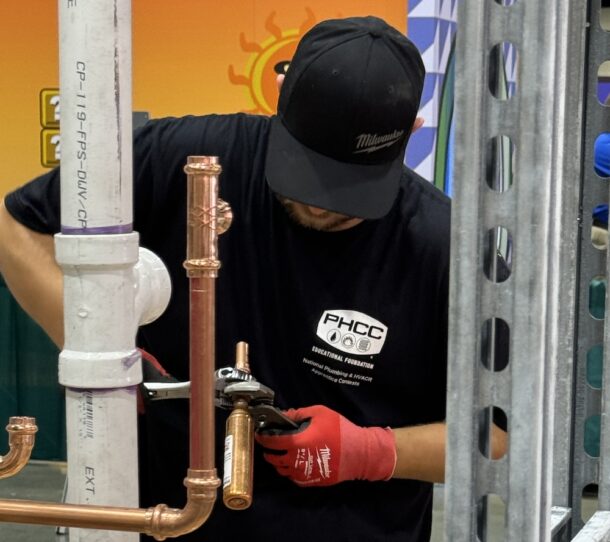
A yearly staple at the CONNECT show is the PHCC Educational Foundation’s National Plumbing and HVACR apprentice contests where plumbing apprentices roughed-in a bathroom—including the drain, waste and vent lines, a toilet, a sink and shower. HVACR apprentices demonstrated their knowledge with a written test, and put their hands-on skills to the test with brazing, pressure testing, refrigerant recovery, and diagnosing and repairing a package unit system. This year, Logan Cunningham with John J. Maurer Inc., Cataumet, Mass., took top prize for plumbing, while Dane Gonser with Emcor Services Fagan, Kansas City, Kansas, was the winner of the HVAC portion.

This year’s theme, “Authentic Connections,” highlighted the importance of building trust and fostering relationships within the industry. From the daily keynotes featuring best-selling author and Navy commander Mary Kelly, who uncovered the key factors behind leadership success and failure to Jeff Butler, who with the help of the three “Cs”—cadence, collaboration and communication—explored actionable strategies to effectively manage cross-generational challenges and leverage the diversity of your multi-generational workforce as a competitive advantage.
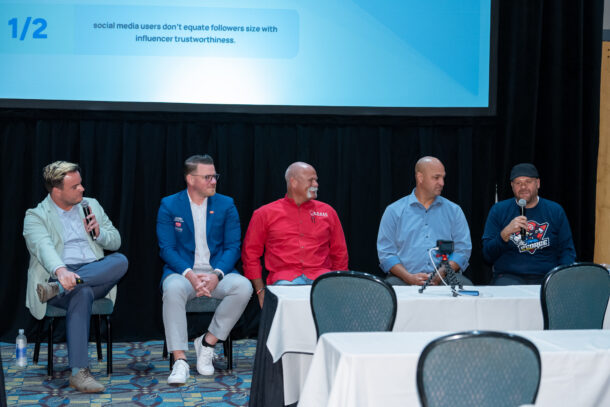
Another highly informative and interactive session featured some of the industry’s most recognizable social media personalities who gave advice in a session aptly named, “What the Hell Is an Influencer?” In addition to friends George DeJesus, George’s Drains LLC, Morris County, N.J., and Mike Prencavage Jr., The Family Plumber, Los Alamitos, Calif., last-minute, heavy-hitter fill-ins, Dustin Van Orman, Any Hour Services, Orem Utah, and Roger Wakefield, Richardson, Tex., stepped in to inform attendees how to use social media in an effective way, for business of course.
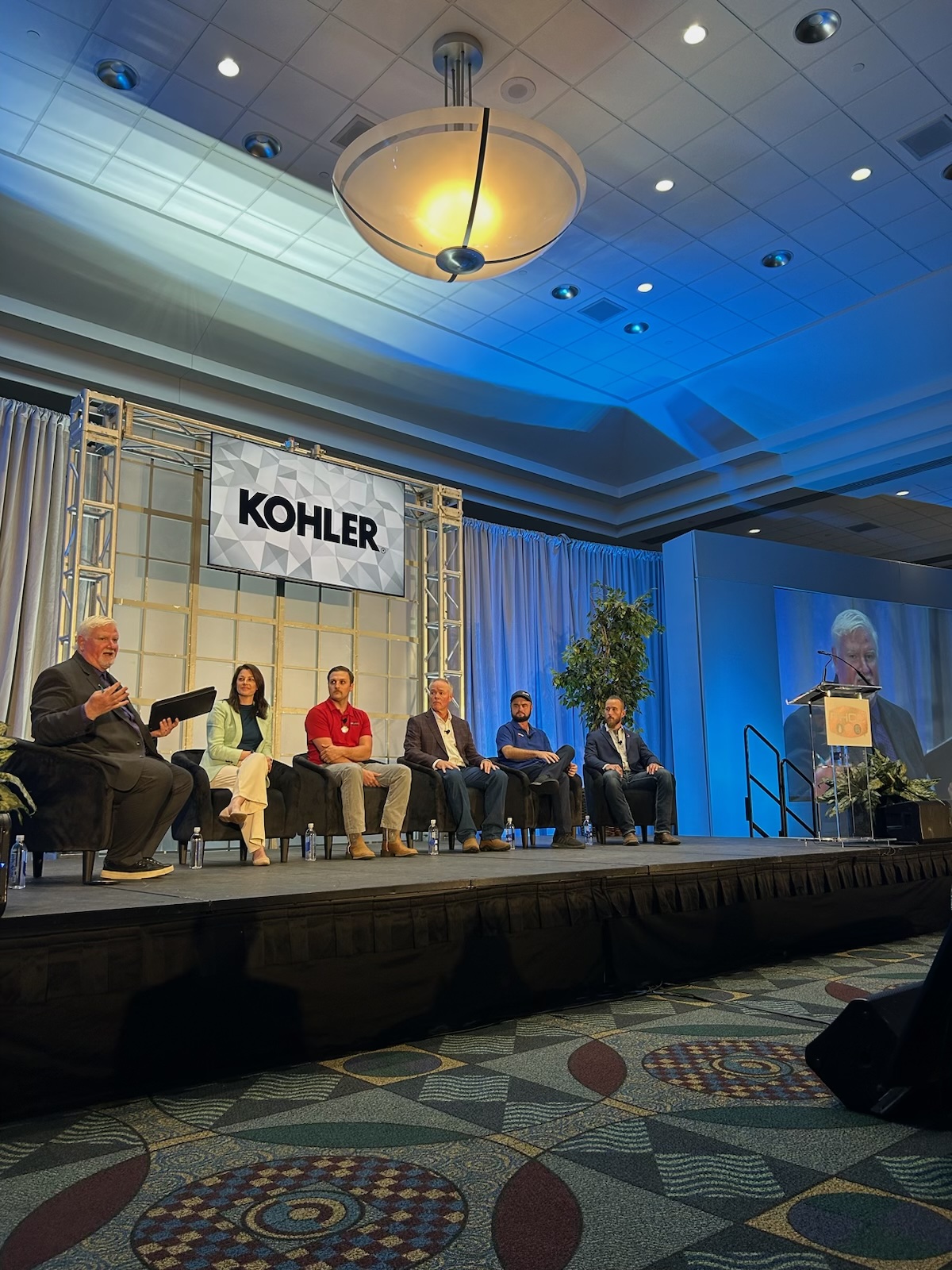 The final keynote on reverse mentoring, moderated by yours truly, featured Erica Barnes, president, General Plumbing & Air Conditioning; Daniel Birmingham, project manager, JRC Mechanical, Chesapeake, Va.; Chris Johnson, owner, Charles Chester Plumbing & Heating, Elko, Nev.; Chase Johnson, general manager, Charles Chester Plumbing & Heating; and Tyler Arndt, Arndt & Sons Plumbing, Brooklyn, Wis., as they shared their experiences and how their ideas and contributions could help their companies thrive in the future.
The final keynote on reverse mentoring, moderated by yours truly, featured Erica Barnes, president, General Plumbing & Air Conditioning; Daniel Birmingham, project manager, JRC Mechanical, Chesapeake, Va.; Chris Johnson, owner, Charles Chester Plumbing & Heating, Elko, Nev.; Chase Johnson, general manager, Charles Chester Plumbing & Heating; and Tyler Arndt, Arndt & Sons Plumbing, Brooklyn, Wis., as they shared their experiences and how their ideas and contributions could help their companies thrive in the future.
Also new this year to CONNECT was live podcasting from the tradeshow floor. The magic of spontaneous discussions, solutions, and insights came alive with some of the industry’s top podcasters. These media personalities hosted high-profile guests as they shared their particular insights to the industry.

Oh, and why is Birmingham called the Magic City, you may ask? Including other names such as “The Iron City” or “The Pittsburgh of the South,” Birmingham is referenced as the Magic City because its soil contained the three necessary elements to produce steel: limestone, coal and iron ore.
Next year’s CONNECT will take place in Grand Rapids, Mich.
